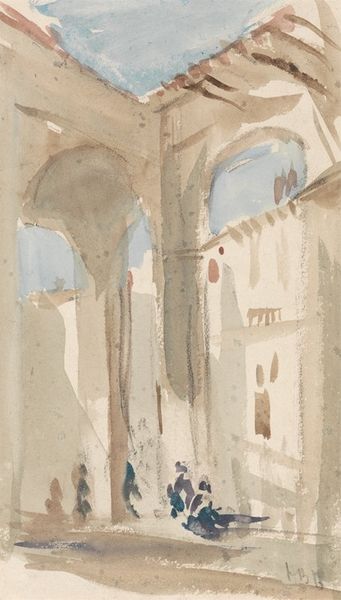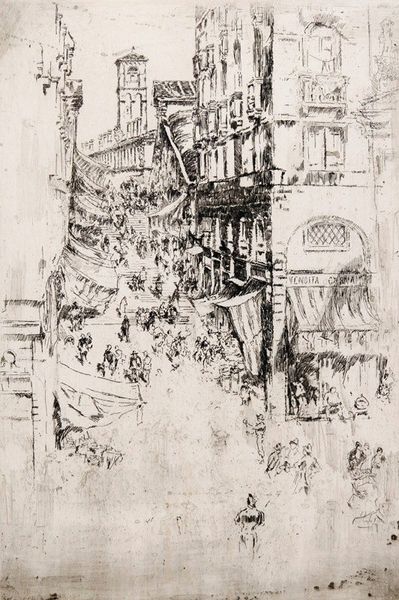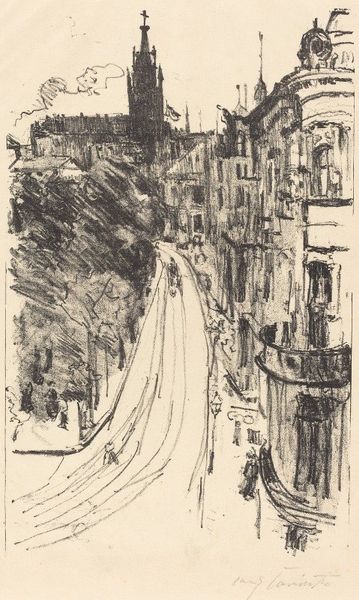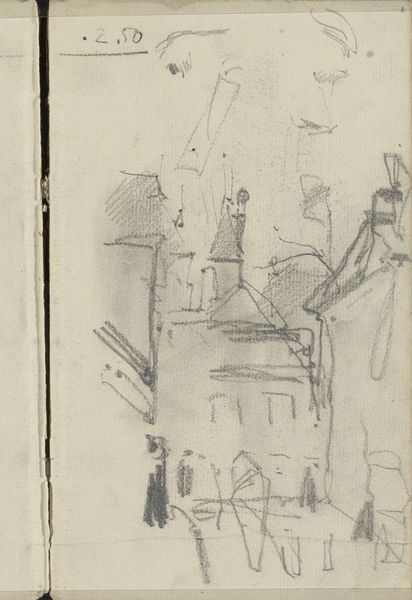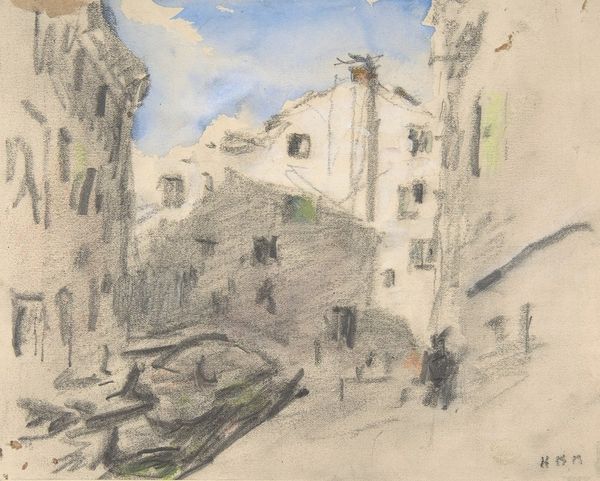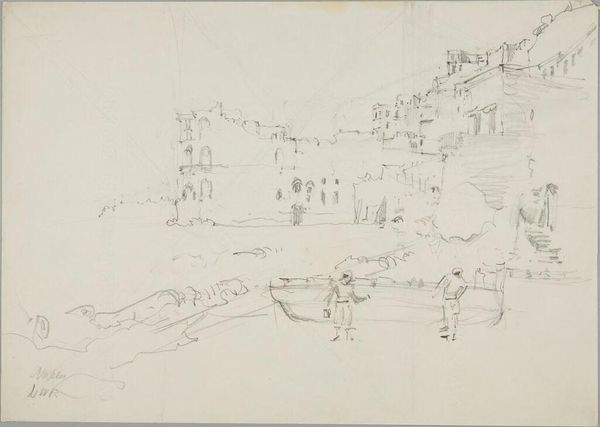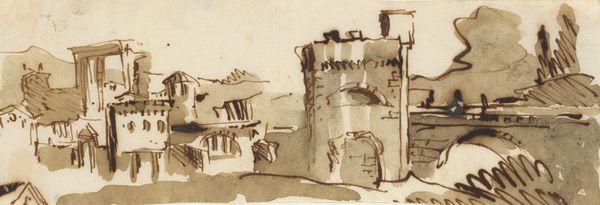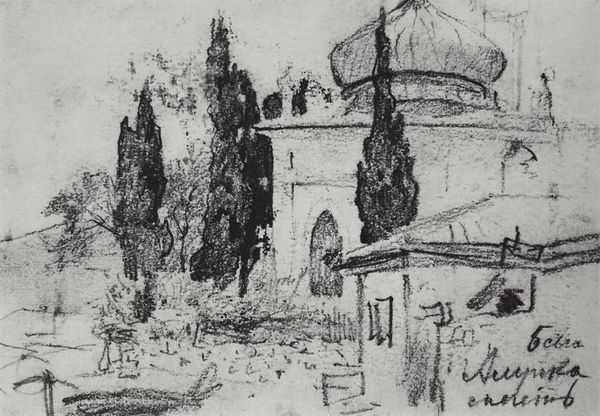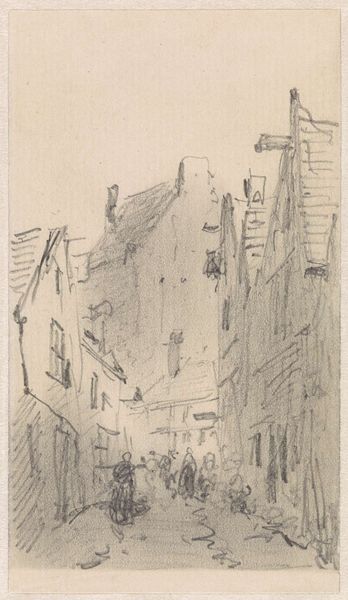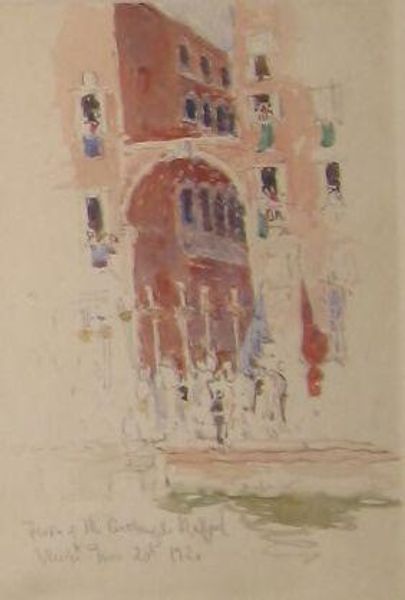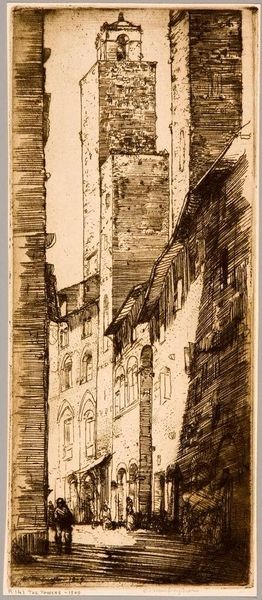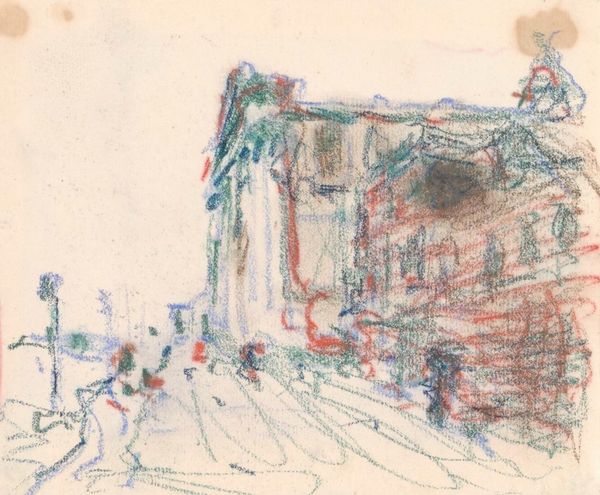
Copyright: Public Domain: Artvee
Curator: This watercolor and ink drawing, created between 1895 and 1905, depicts a Place bordée d’immeubles. The artist is Frédéric Houbron. Editor: It feels like a memory, almost dreamlike. Fleeting, pale yellows and grays… like a half-remembered afternoon in a city I might have loved. Curator: Houbron worked primarily as a watercolorist and printmaker, depicting scenes from everyday life with a focus on architectural motifs. You can really see the process here, the sketch underlying the washes of color. Editor: It’s very raw, the exposed sketch lines give it a wonderful honesty. I feel the artist standing right there, quickly capturing the essence of the scene before the light shifts. Was this destined to be part of something larger? Curator: Possibly, but it’s quite typical of Impressionist practices. Many artists sought to capture the transient qualities of modern life, not just the finished product, but also the initial stages of envisioning something. Think of the readymade sketches turned into artworks as a material fact. Editor: Ah, so almost highlighting the artistic labor as the final product, which sort of disrupts the typical fine art and craft binary. I still adore how the building on the left has an almost anthropomorphic presence. Curator: That layering technique… it is almost as if the watercolor breathes through the architecture itself. The color usage does appear as both construction and destruction. The work showcases modern techniques, but it doesn't ignore tradition. Editor: This place almost certainly doesn’t exist exactly as he rendered it, it's about creating an emotional reaction. It asks: What’s more real, a perfect photograph or an imperfect but emotionally resonant memory? Curator: Exactly, that gets to the core of this artist’s era of production and what their work signified at this time. Editor: This whisper of a memory certainly leaves its mark, even on me today. Curator: Indeed, the art's essence—rooted in materiality and historical context—allows viewers to examine Houbron's method through a renewed perspective on Impressionist art as labor and artistic production.
Comments
No comments
Be the first to comment and join the conversation on the ultimate creative platform.
